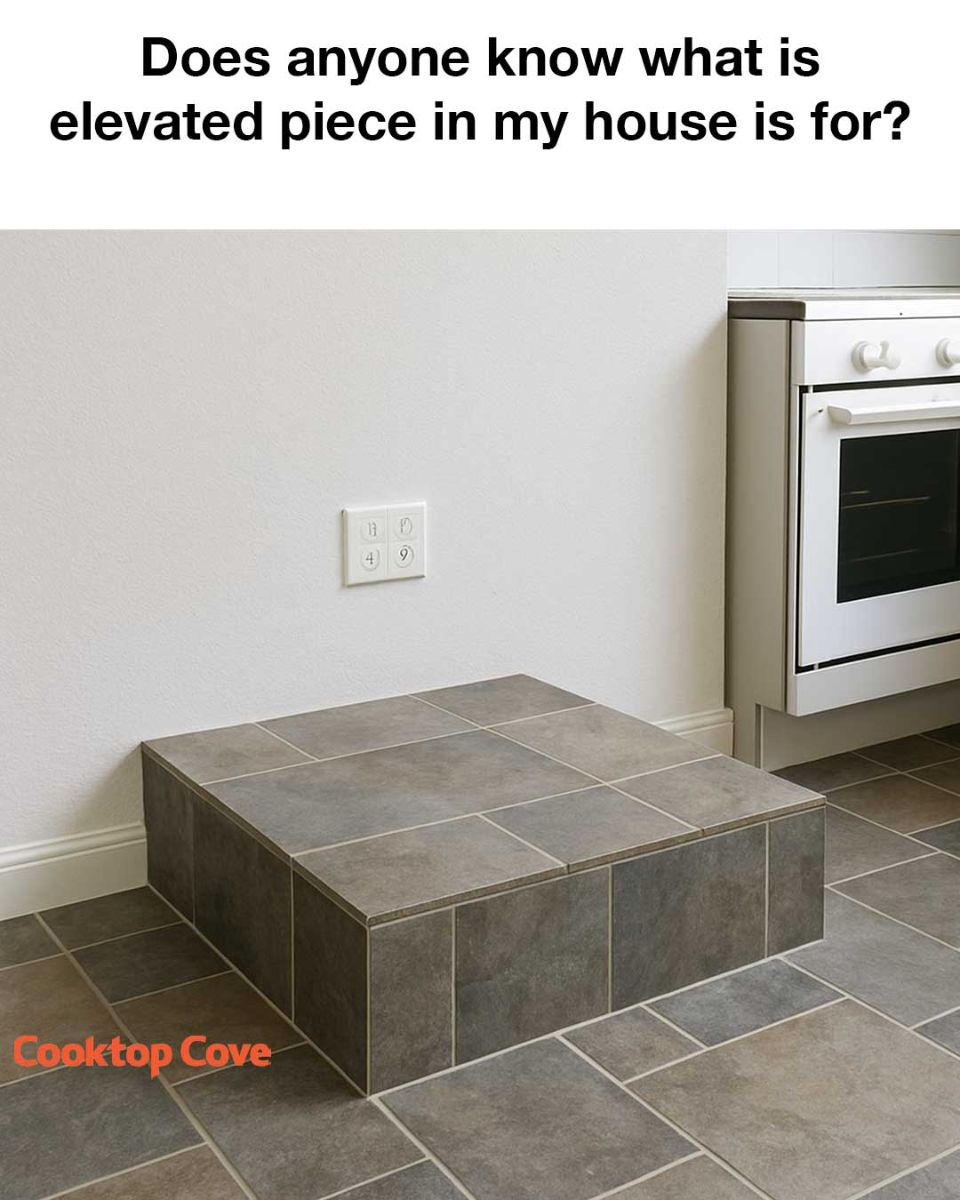First time I’m hearing of this
Georgia Lynn
Contributing Writer
Print this recipe
Homeowners often encounter various architectural features in their homes that leave them puzzled. One such enigma is the elevated piece or platform that may be found in certain rooms, particularly in older homes or those with specific heating installations. This feature can be a source of curiosity and confusion, leading many to wonder about its purpose and origin.
Understanding the function and history of these elevated platforms can not only satisfy curiosity but also inform homeowners about potential uses and benefits. Whether it’s a relic from a bygone era or a functional component of modern home design, the elevated piece in your house may have more significance than meets the eye.
1. The Mystery of the Elevated Piece: A Common Homeowner Query
The elevated piece in a home is often a platform that raises a particular area of the floor. These platforms can vary in size and height, typically ranging from a few inches to a foot or more. They are commonly found in living rooms, basements, or near fireplaces. Homeowners frequently question their purpose, especially if the platform seems to serve no immediate function.
In many cases, these platforms are designed to accommodate specific installations, such as stoves or fireplaces. They may also be remnants of previous architectural styles or practical solutions to structural challenges. Understanding the specific context of your home’s design can provide clues to the platform’s intended use.
2. Historical Origins of Elevated Platforms in Homes
Elevated platforms have historical roots that date back to various architectural traditions. In older homes, these platforms were often used to elevate wood or coal stoves, providing a stable and heat-resistant surface. This was particularly common in the 19th and early 20th centuries when such heating methods were prevalent.
In some cultures, elevated platforms were also used for ceremonial or practical purposes, such as keeping certain areas dry or designating a space for specific activities. The historical context of your home, including its age and regional architectural influences, can offer insights into why an elevated platform was originally constructed.
3. The Role of Elevated Platforms in Wood and Pellet Stove Installations
In modern homes, elevated platforms are frequently used for wood and pellet stove installations. These platforms provide a safe and stable base for stoves, which can weigh several hundred pounds. The elevation helps protect the underlying floor from heat damage and makes it easier to clean around the stove.
Platforms for stoves are typically constructed to specific dimensions to accommodate the size and weight of the stove. They may also include additional features, such as heat-resistant materials or integrated storage for firewood or pellets. The design and construction of these platforms are often guided by building codes and safety standards.
4. Safety Considerations: Why Elevating Stoves Matters
Safety is a primary concern when installing stoves in a home, and elevated platforms play a crucial role in ensuring safe operation. By raising the stove off the ground, the platform helps prevent heat transfer to combustible materials, reducing the risk of fire. This is especially important in homes with wooden floors or other flammable surfaces.
In addition to protecting the floor, elevated platforms can also improve air circulation around the stove, helping to disperse heat more evenly throughout the room. This can enhance the efficiency of the stove and reduce the likelihood of overheating in specific areas.
5. Energy Efficiency Benefits of Elevated Stoves
Elevating a stove can contribute to improved energy efficiency in a home. By raising the stove, the platform allows for better airflow and heat distribution, which can help maintain a consistent temperature throughout the room. This can reduce the need for additional heating sources and lower energy consumption.
Furthermore, an elevated stove can make it easier to access and manage the stove’s controls and maintenance tasks, ensuring that the appliance operates at peak efficiency. This can lead to cost savings on energy bills and a more comfortable living environment.
6. Aesthetic Appeal: How Elevated Platforms Enhance Home Design
Beyond their functional benefits, elevated platforms can also enhance the aesthetic appeal of a home. A well-designed platform can serve as a focal point in a room, drawing attention to the stove or fireplace and adding visual interest to the space. The choice of materials and finishes can complement the overall design scheme, creating a cohesive and stylish look.
Homeowners can customize their platforms with decorative elements such as tile, stone, or wood trim, allowing for personalization and creativity. An elevated platform can transform a utilitarian feature into a design statement that enhances the character and charm of a home.
7. Common Materials Used for Stove Platforms
Stove platforms are typically constructed from durable, heat-resistant materials that can withstand the demands of daily use. Common materials include concrete, brick, stone, and tile, all of which provide a stable and fire-resistant surface. These materials are often chosen for their ability to absorb and dissipate heat, reducing the risk of damage to the surrounding area.
In addition to traditional materials, some homeowners opt for more modern solutions, such as metal or engineered stone, which offer a sleek and contemporary look. The choice of materials can also be influenced by the home’s architectural style and the desired aesthetic effect.
8. DIY vs. Professional Installation: What You Need to Know
When considering the installation of an elevated stove platform, homeowners must decide whether to tackle the project themselves or hire a professional. DIY installation can be a cost-effective option for those with the necessary skills and experience. However, it requires careful planning and adherence to safety standards to ensure a successful outcome.

